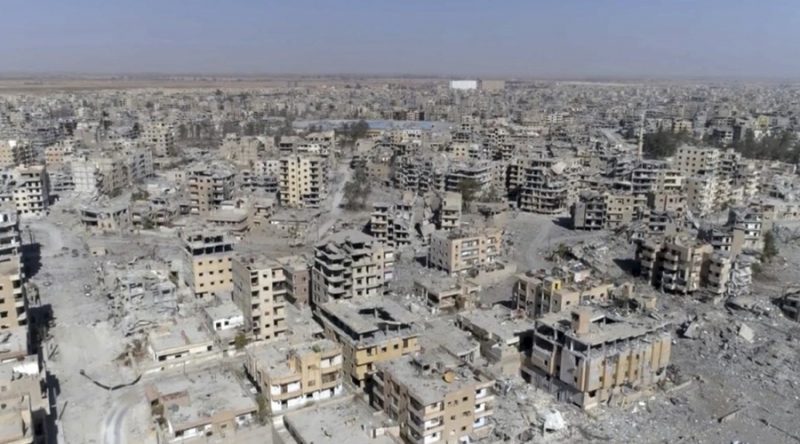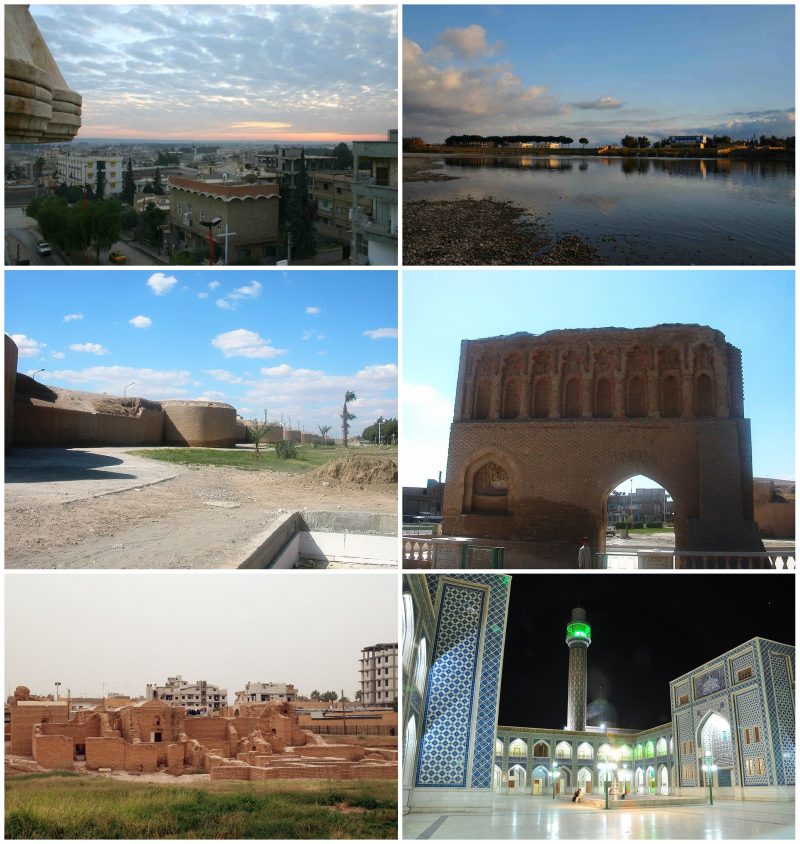
The so-called Islamic State organization was primarily a bogeyman encouraged by the western powers. I’ve been saying this for the last four years.
I asserted, as a former soldier and war correspondent, that IS would collapse like a wet paper bag if proper western ground forces attacked their strongholds in Syria and Iraq. This week, the western powers and their local satraps finally took action and stormed the last IS stronghold at Raqqa. To no surprise, IS put up almost no resistance and ran for its miserable life.
The much-dreaded IS was never more than a bunch of young hooligans and religious fanatics who were as militarily effective as the medieval Children’s Crusade.
In the west, IS was blown up by media and governments into a giant monster that was coming to cut the throats of honest folk in the suburbs.
IS did stage some very bloody and grisly attacks – that’s what put it on the map. But none of them posed any mortal threat or really endangered our national security. In fact, the primary target of IS attacks has been Shia Muslims in the Mideast.
Many of the IS attacks in North America and Europe were done by mentally deranged individuals or were initiated by under-cover government provocateurs, such as the 1993 bombing of New York’s World Trade Center. IS was notorious for falsely taking credit for attacks it did not commit.
Other ‘lone wolf’ attacks were made by Mideasterners driven to revenge after watching the destruction by the US and its allies of substantial parts of their region. Think Iraq, Syria, Yemen, Somalia, Libya, Afghanistan, parts of Pakistan, and the murderous brutality of Egypt’s-US backed regime.

Before the Ancient Historic City of Raqqa was Destroyed
IS appears to have been shaped by western intelligence in an effort to duplicate its success with the Afghan mujahidin in the mid 1980’s that helped defeat the Soviet Union. CIA, Pakistani and Saudi intelligence, and Britain’s MI-6 recruited some 100,000 volunteers from across the Muslim world to wage jihad in Afghanistan. I observed this brilliant success first hand from the ranks of the mujahidin.
The western powers, led by the US, sought to emulate this success in Syria by unleashing armies of mercenaries, disaffected, unemployed youth, and religious primitives against the independent-minded regime of President Bashar Assad. The plan nearly worked – at least until Russia, Iran, and Lebanon’s Hezbollah movement intervened and reversed the tide of battle.
The canard promoted in the west that IS was a dire military threat was always a big joke. I said so on one TV program and was promptly banned from the station. I’m also the miscreant who insisted that Iraq never had weapons of mass destruction and was consequently blacklisted by a major cable TV news network.
The CIA cobbled together two small armies, one of Kurdish Peshmerga fighters, and the other of Iraqi mercenaries. Both were directed, armed, equipped and financed by Washington. Shades of the British Empire’s native troops under white officers. The Kurds and Iraqi Arabs are now in a major confrontation over the Kirkuk oil-rich region.
Raqqa and Mosul were so close to western forces that they were merely a taxi ride away. But it took three years and much token bombing of the desert before a decisive move was made against IS. Once the US-led campaign against Damascus failed, the crazies of IS were no longer of any use so they were marked for death.
Like Fallujah in Iraq and Mosul, Raqqa was flattened by US air power, a stark message to those who would defy the American Raj. The ruins of Raqqa, the IS capital, were occupied by US-led forces. This historic déjà vu recalled the dramatic defeat by British Imperial forces at Omdurman in September 1898 of Sudan’s Khalifa and his Islamic dervish army.
The remnants of IS had melted into the Euphrates Valley and the desert. They will now return to being an irksome guerilla group with very little combat power. Anti-western IS supporters still cluster in Europe’s urban ghettos and will cause occasional mayhem. A few high-profile attacks on civilians may be expected to show that IS is still alive.
But none of this is likely to influence the course of events. IS’s rival, al-Qaida, is likely to resurface and lead attacks to drive the west out of the Mideast.
The Islamic State bogeyman was very useful for the western powers. It justified deeper military involvement in the Mideast, higher arms budgets, scared people into voting for rightwing parties, and gave police more powers. By contrast, these faux Muslims brought misery, fear and shame on the Islamic world. We are very well rid of them. And it’s about time.
Eric S. Margolis is an award-winning, internationally syndicated columnist. His articles have appeared in the New York Times, the International Herald Tribune the Los Angeles Times, Times of London, the Gulf Times, the Khaleej Times, Nation – Pakistan, Hurriyet, – Turkey, Sun Times Malaysia and other news sites in Asia. https://ericmargolis.com/
Copyright Eric S. Margolis 2017
From Wikipedia, the free encyclopedia
Raqqa (Arabic: الرقة ar-Raqqah), also called Raqa, Rakka, al-Raqqah, and ar-Raqqah, is a city in Syria located on the northeast bank of the Euphrates River, about 160 kilometres (99 miles) east of Aleppo. It is located 40 kilometres (25 miles) east of the Tabqa Dam, Syria’s largest dam. The Hellenistic, Roman, and Byzantine city and bishopric Callinicum (formerly a Latin—and now a Maronite Catholic titular see) was the capital of the Abbasid Caliphate between 796 and 809, under the reign of Harun al-Rashid. With a population of 220,488 based on the 2004 official census, Raqqa was the sixth largest city in Syria.[1]
During the Syrian Civil War, the city was captured in 2013 by the Syrian opposition and then by the Islamic State of Iraq and the Levant. ISIL went on to make the city its defacto capital in 2014.[2] As a result, the city was hit by airstrikes from the Syrian government, Russia, the United States and several other countries. Most non-Sunni religious structures in the city were destroyed by ISIL, most notably the Shi’ite Uwais al-Qarni Mosque, while others have been forcefully converted into mosques. On 17 October 2017, following a lengthy battle that saw massive destruction to the city, the Syrian Democratic Forces (SDF) declared the liberation of Raqqa from ISIL to be complete.[3]
The 21st Century
See also –
Russia compares US-led bombing of Raqqa to WWII destruction of Dresden
